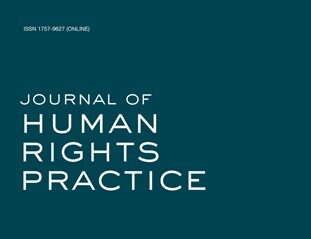There has been, in the past two decades, more scholarly attention for how rights-holders understand human rights norms, and how these understandings interact with pre-existing notions of (social) justice. This attention for rights-holders’ lived experiences can be linked to the growing influence of socio-legal and legal anthropological perspectives, as well as to that of emancipatory research methods, such as participatory action research. What these perspectives and methods have in common is their interest in how people experience and express their rights in practice, and how they give meaning to them. Remarkably little attention, however, has been paid to the question of how we try to understand this process of meaning-making. The dominant modes of engagement tend to (a) emphasize the spoken or written word, and (b) presume—the possibility of—an accessible verbal narrative. The shortcomings of engaging exclusively on the basis of verbal language becomes clear when considering the lived experience of certain particularly vulnerable groups, such as displaced people who are coping with ongoing violence and trauma or who have been forced into silence for years. Not everyone can speak freely about their lived experience or can tell a coherent story about it, and adopting an—exclusively—word-driven engagement strategy may reproduce existing power relations. Based on preliminary fieldwork with refugees from Syria in the Shatila refugee camp, we argue that a performative ethnography rooted in collaborative making and artistic practice is a promising way to engage with and understand how people make sense of their lived experience, as it allows research participants to express themselves using those (skilled and artistic) practices most familiar to them. We reflect on how a practice-driven mode of engagement may shed a different light on how people make sense of questions related to justice and their rights.
Artistic practices as a site of human rights. How performative ethnography can facilitate a deeper contextual understanding
Article by Tine Destrooper and Sofie Verclyte in the Journal of Human Rights Practice

Released in 2022
Link to publication
Download



